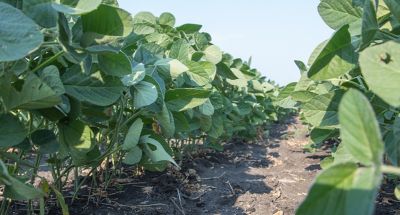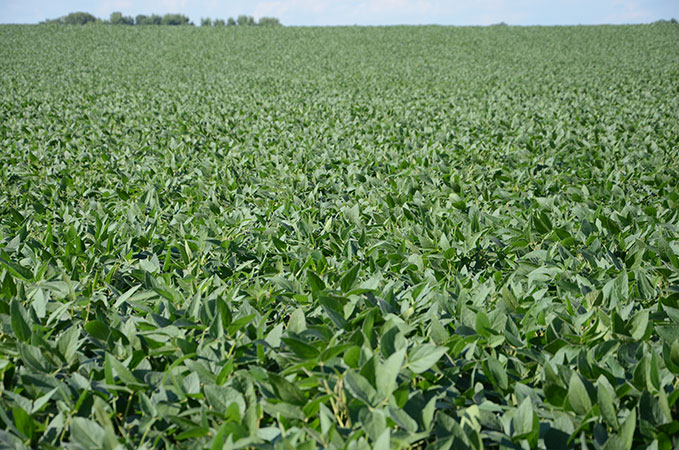4 Tips for Tackling Soybean Cyst Nematode

Experts stress the importance of "knowing your number" when it comes to SCN field populations and getting a handle on resistant varieties.
Soybean cyst nematode (SCN) is the most damaging pathogen of soybeans, causing an estimated $1.5 billion in yield losses each year across North America, but proper testing for the pest can help cut your losses.
“It’s 10 times more damaging than any other soybean pathogen,” said nematologist Greg Tylka of Iowa State University, explaining that farmers are losing about 15 bushels per acre to the pest.
Some farmers are leaving thousands of dollars in their fields by leaving SCN unmanaged as it breaks resistance, he warns. Actively managing SCN can help recover a lot of that lost yield, he said.
“You don’t know you have it unless you test,” Tylka said, adding that it’s not that hard to sample for soybean cyst. Infestations can vary widely field to field. “You need your own data, with your own numbers,” he said.

HIDDEN YIELD ROBBER: This soybean field appears clean with few weeds and little disease, but as the season progresses the hidden challenge of soybean cyst nematode could change this picture dramatically.
1. Learn your levels
Just about everybody in soybean growing areas of the United States and Canada needs to assume they have SCN, says Mary Gumz, an Indiana-based agronomy manager for Corteva Agriscience.
“it’s important for farmers to really know the level of cyst nematode infection that they have in their field,” Gumz says, adding that infestation levels are rising at an alarming rate.
If you find high egg counts, seek management recommendations from The SCN Coalition, which also gives sampling recommendations, as well as from your local retailer and agronomist.
Periodically, test again to see if you're making progress, Tylka urges.
2. Take a representative sample in the fall
The best time to sample soil is just before harvest, when the leaves have fallen and it’s easier to get into the field, Gumz says.
“You want to take about a six-inch sample with a probe. Take about 20 to 30 soil cores, mix them together and send them in,” she said.
Tylka recommends pulling eight-inch cores. Farmers or agronomists should walk in a zigzag over 20 acres, and each time they zig or zag, collect a soil core, he urges. Mix them well in a bucket before sealing the sample.
3. Keep samples cool, air-tight
“The important thing is to keep the samples cool and to also keep them airtight,” Gumz says. “You want to send these in Ziploc bags because they can count dead nematodes, but they can't count desiccated nematodes that have fallen apart because the sample has gotten dry.”
Even when taking 30 cores, you’re sampling only a small part of a field, she notes. SCN does not move very far, and if you get a score of zero, it’s possible you tested a part of the field that doesn’t have any nematodes, Gumz said.
There are many commercial laboratories, and land grant universities have their own soybean cyst nematode testing labs for their states as well, Gumz said.
4. Consider management options
“The more eggs in the soil, the more yield loss will occur,” Tylka said.
Egg count levels reaching 5,000 indicate significant damage and a serious problem, but really, any cyst nematodes in a field need to be managed, Gumz stresses.
“If you have fields that have had a big increase in soybean cyst nematode numbers or are showing a significant level of cyst nematode for the first time,” Gumz said, “it alerts you that maybe you need to start doing some different options for management in that field.”
They could include seed treatments such as Ilevo® seed treatment or incorporating the Peking source of resistance into your crop rotation, she said.
“Understand your SCN populations and monitor which resistance types and seed treatments seem to be working to reduce populations,” advises Ken O’Brien, agronomy sciences leader for Corteva Agriscience. Once you get your test results, he said, you can look ahead to next year’s management.
“I do think that seeing some SCN populations increase despite the use of PI 88788, the most commonly used resistance, can be troubling, but it's not a problem that we can't overcome with management,” said O’Brien, who is based in Iowa.
“We have other resistance, we have seed treatments, we have rotations. We do have other options for management. We just need to be smart about this and talk through strategies, and we can continue to raise really good soybean crops.”
This content produced by Farm Progress for Corteva Agriscience.

ILEVO® is a registered trademark of BASF.